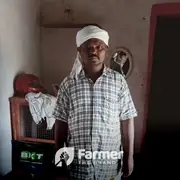
Agriculture in India is in deep stress. The Centre and State is looking at various methods to combat malnutrition and to make farmer livelihoods sustainable. Many states have decided to promote millets. Yesterday’s coarse grains are considered nutritious cereals. They are rich in nutrients such as iron, zinc and calcium. Millets need less inputs and is rainfed and is an economically viable option if marketing avenues are created says Mosu Ram, a millet farmer from Bastar. At present the State and Centre is adopting a mission-mode approach to promote the once-forgotten cereals says Mosu Ram.The KVK ,BAstar and Indira Gandhi Viswa Vidyalaya is also helping them and guiding them says Mosu Ram.

Bastar District is a southern part of the Chhattisgarh having an area of 8755.79 km² and Jagdalpur is the district headquarters. More than 65% population belong to tribes like Maria, Muriya, Bhatra, Halba, Gond, Parja, Dhurva etc. Rice is grown predominantly during Kharif season as rain fed crop having 2.39 lakh hectare area but the productivity of this crop is very low 8.53 q/ha in Bastar region of Chhattisgarh. The irrigated area is 1.67% and irrigation coverage is only 1.2% whereas fertilizer use (4.6 kg/ha) are very less, which is insufficient to supply adequate nutrient to the high demand crops.

According to Reports of Pradan, the livelihood pattern in Bastar is largely traditional. The Kharif crops grown here are Paddy, Small Millets, Horse Gram, Urd, Arhar, Jowar and Maize. Millets are grown here since rice cannot perform well in uncertain rainfall and sometimes rice completely fails to due this factor, but small millets are a good answer for the situation because it requires less water than rice and they are tolerant to drought and erosion control. Plenty of land available as upland in this region which might be converted in seed production of small millets on upland during Kharif. It is complete Organic cultivation happening here says Mosu Ram and hence productivity is a little lower when compared to areas that use chemicals, hence their rates for Millets are also higher if you want to purchase.

Tribal communities in Bastar depend on forests and at present they have been facing a lot of problems due to man-animal conflicts, land grabbing mafia, cutting down of forests, low agriculture yields, and fewer livelihood opportunities. This story is About Mosu Ram, a tribal farmer from Bastar in Chhattisgarh who is galvanizing an entire village to bring about a radical change in millet production. This is a story of change from a low income, extreme malnutrition, and poverty to on its way to food security. He has been a fellow farmer in the Krishi Jagran Initiative #ftb sharing his story with our readers. He was in conversation with the Editor of Agriculture World, Dr Lakshmi Unnithan.
Mosu Ram says he was farming for his family and for the last ten years he is farming in 250 acres and he does three kinds of millets namely Kodo, Kutki and Ragi. No external inputs are used and it’s a rainfed crop. They take the crop once a year and that too in the rainy season from June to September. Mosu Ram ji says they are facing high uncertainty these days with respect to floods and droughts.


















Share your comments